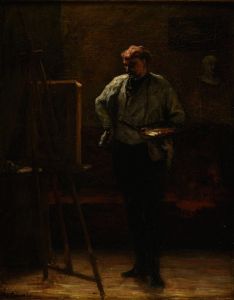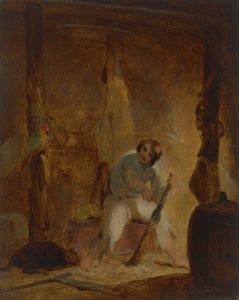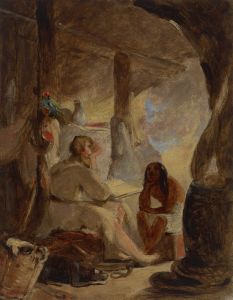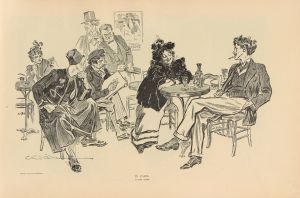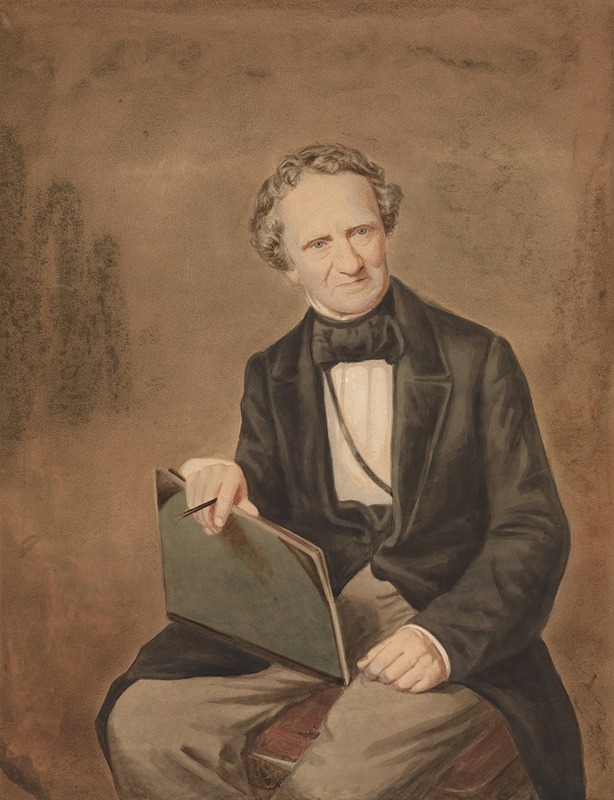
Self-Portrait
A hand-painted replica of Thomas Sully’s masterpiece Self-Portrait, meticulously crafted by professional artists to capture the true essence of the original. Each piece is created with museum-quality canvas and rare mineral pigments, carefully painted by experienced artists with delicate brushstrokes and rich, layered colors to perfectly recreate the texture of the original artwork. Unlike machine-printed reproductions, this hand-painted version brings the painting to life, infused with the artist’s emotions and skill in every stroke. Whether for personal collection or home decoration, it instantly elevates the artistic atmosphere of any space.
Thomas Sully's "Self-Portrait" is a notable work by the American portrait painter, who was born in 1783 in Horncastle, Lincolnshire, England, and later became a prominent figure in the American art scene. Sully immigrated to the United States with his family in 1792, settling in Charleston, South Carolina. He began his artistic career under the tutelage of his brother-in-law, Jean Belzons, a French miniaturist, and later studied with Gilbert Stuart, one of America's foremost portraitists.
Sully's "Self-Portrait" is an example of his skill in capturing the likeness and character of his subjects, a talent that made him one of the most sought-after portrait painters of his time. While the exact date of this self-portrait is not definitively documented, it is believed to have been painted during the early to mid-19th century, a period when Sully was at the height of his career.
The painting reflects Sully's adept use of color and light, hallmarks of his style that were influenced by his studies in Europe, particularly in London where he was exposed to the works of Thomas Lawrence. Sully's portraits are known for their elegance and the subtle psychological insight they offer into the sitter's personality, and his self-portrait is no exception. It provides a glimpse into Sully's own self-perception and artistic identity.
Throughout his career, Sully painted over 2,000 portraits, including those of prominent figures such as Thomas Jefferson, John Quincy Adams, and the Marquis de Lafayette. His most famous work is perhaps the portrait of Queen Victoria, painted in 1838, which was commissioned by Philadelphia's St. George's Society. This work solidified his reputation as a leading portraitist of his era.
Sully's "Self-Portrait" is significant not only as a representation of his artistic skill but also as a personal statement from the artist himself. Self-portraits often serve as a means for artists to explore their own identity and place within the art world, and Sully's work is no different. It reflects his confidence and mastery of the portrait genre, as well as his understanding of the nuances of human expression.
The painting is part of the collection at the Metropolitan Museum of Art in New York City, where it is preserved as an important piece of American art history. The museum's collection includes several of Sully's works, showcasing the breadth and depth of his contributions to American portraiture.
In summary, Thomas Sully's "Self-Portrait" is a testament to his skill and prominence as a portrait artist in the 19th century. It captures not only his technical abilities but also offers insight into his personal and professional life, making it a valuable piece for both art historians and enthusiasts alike.









